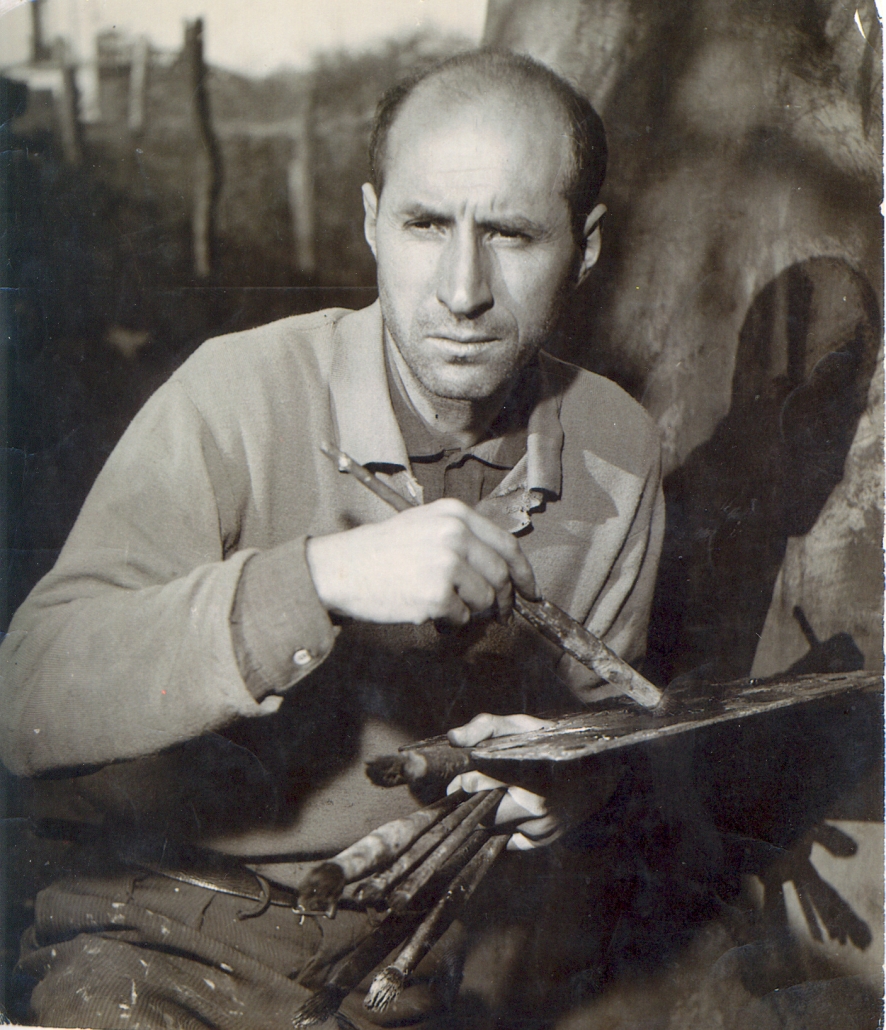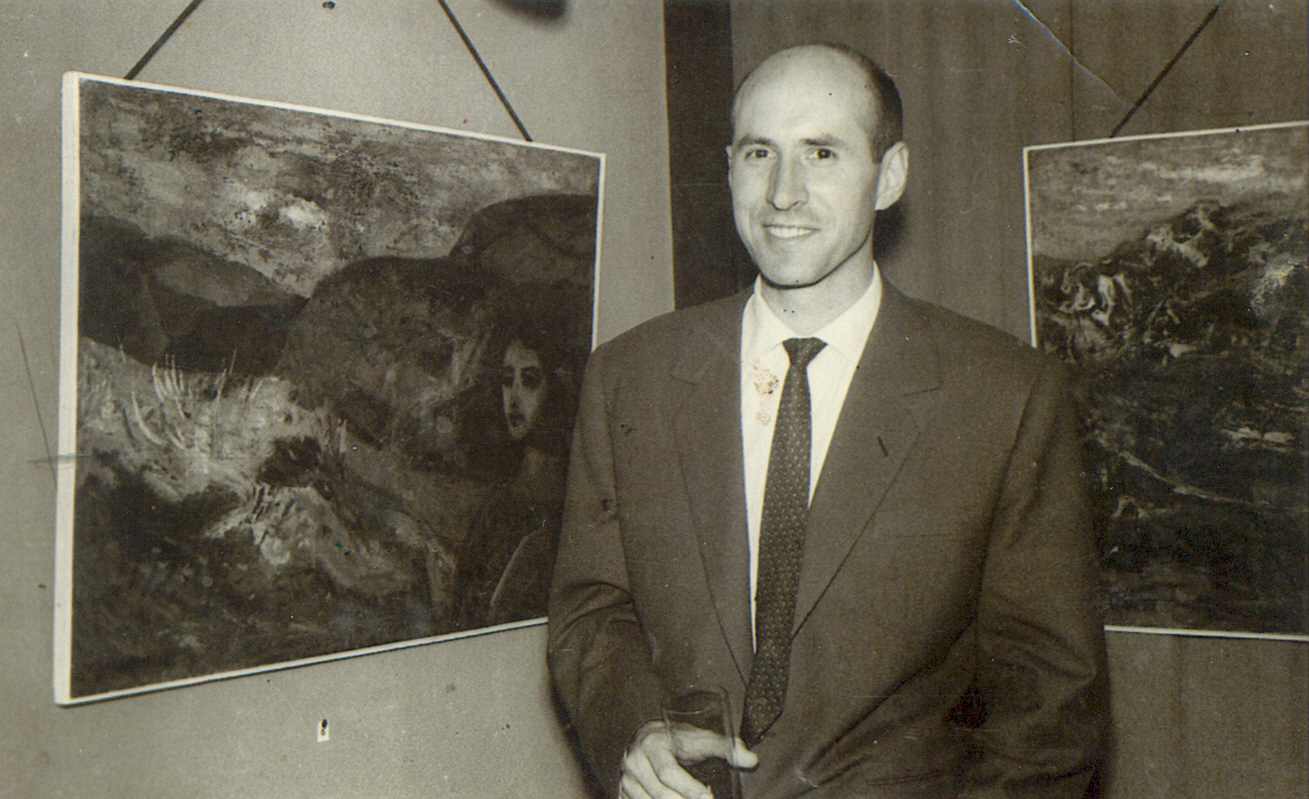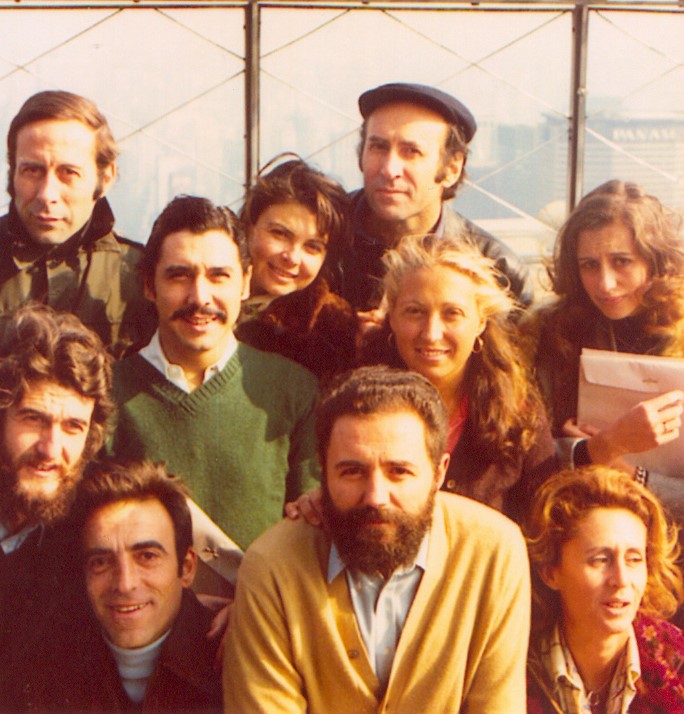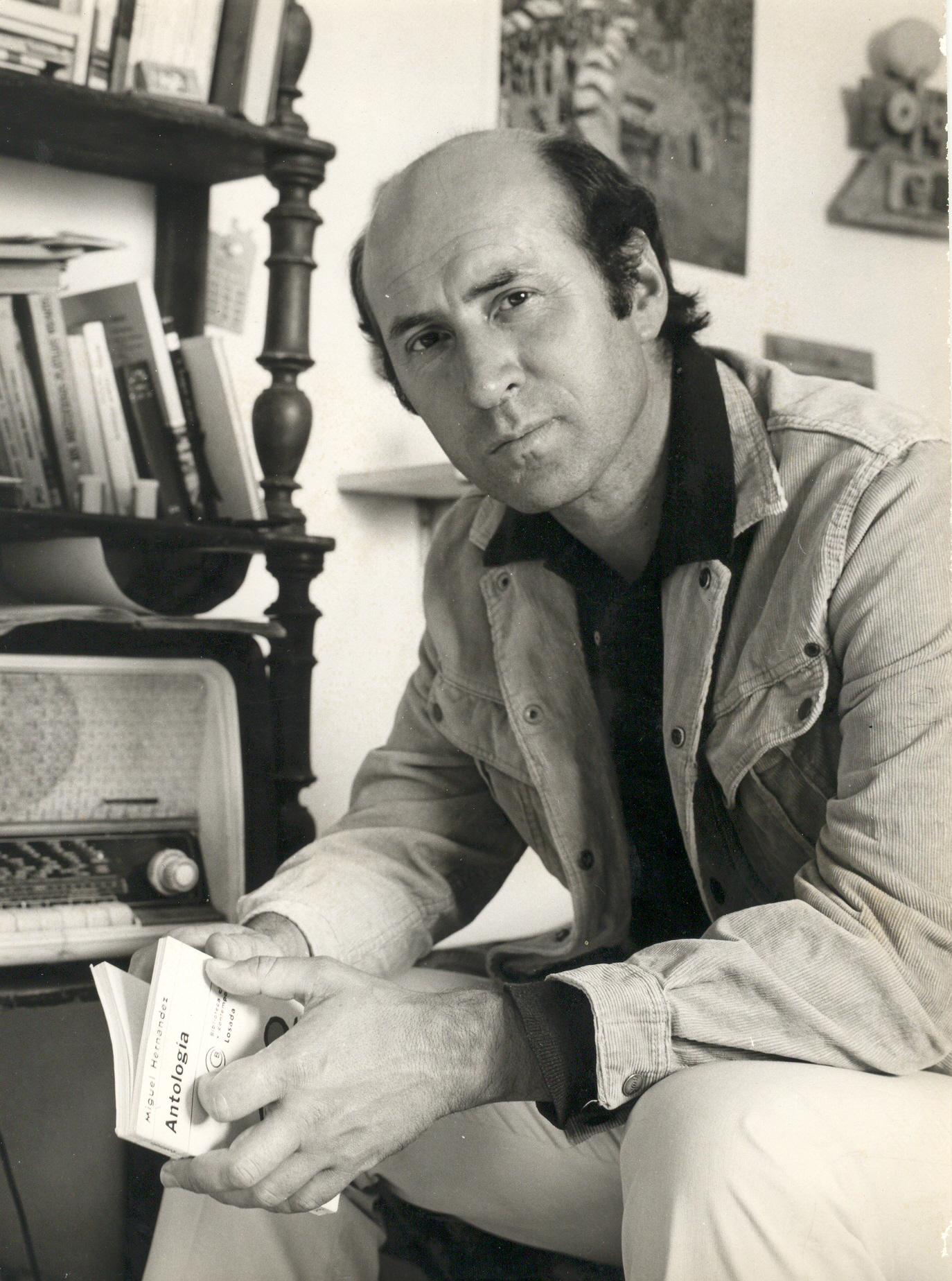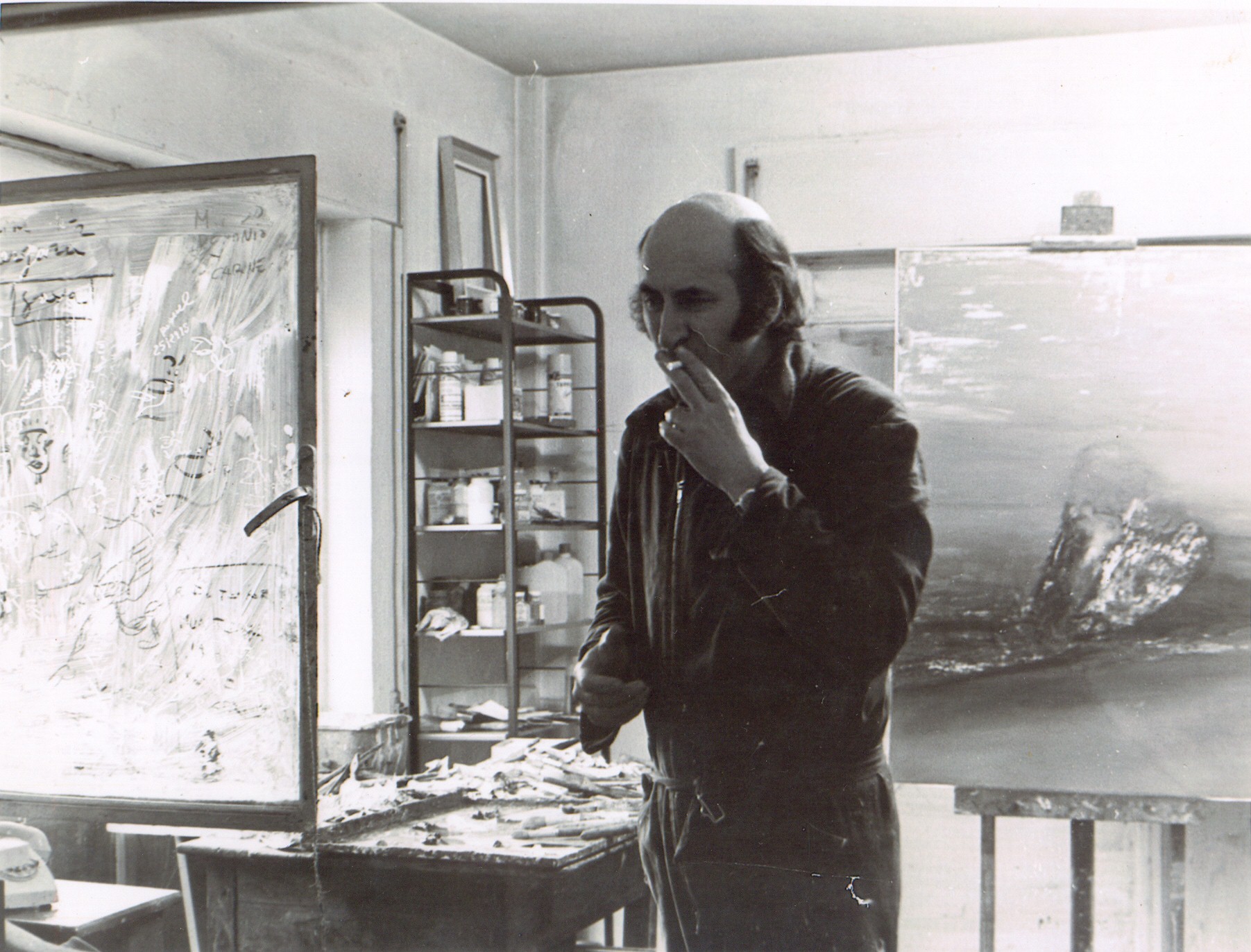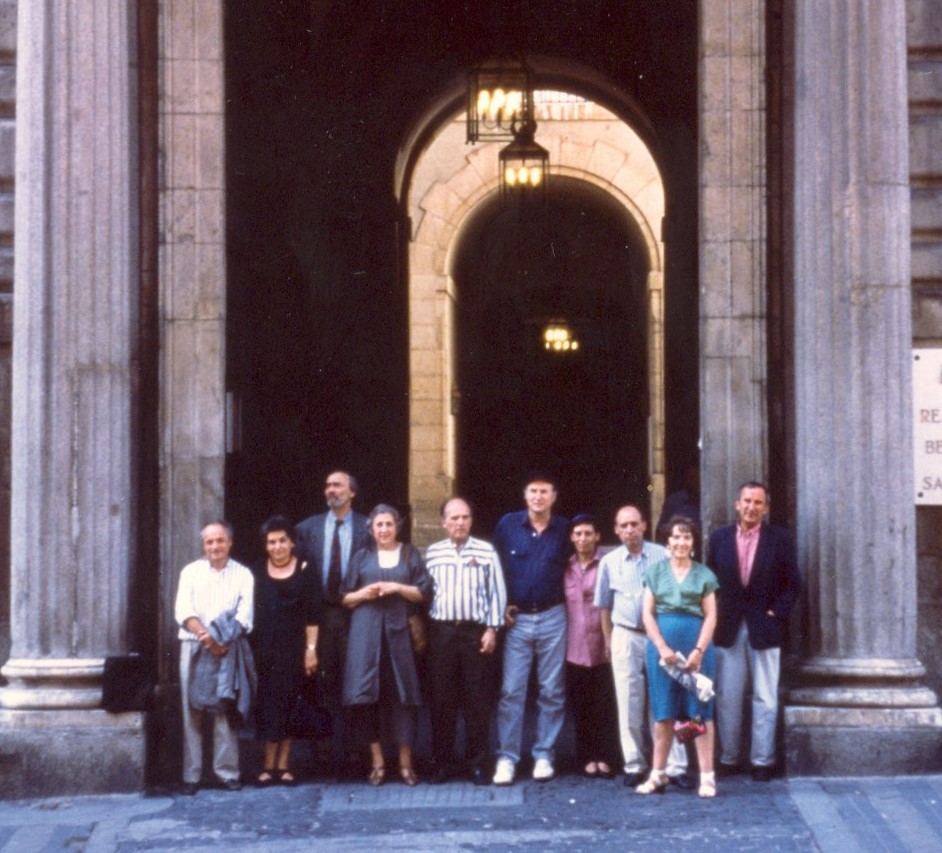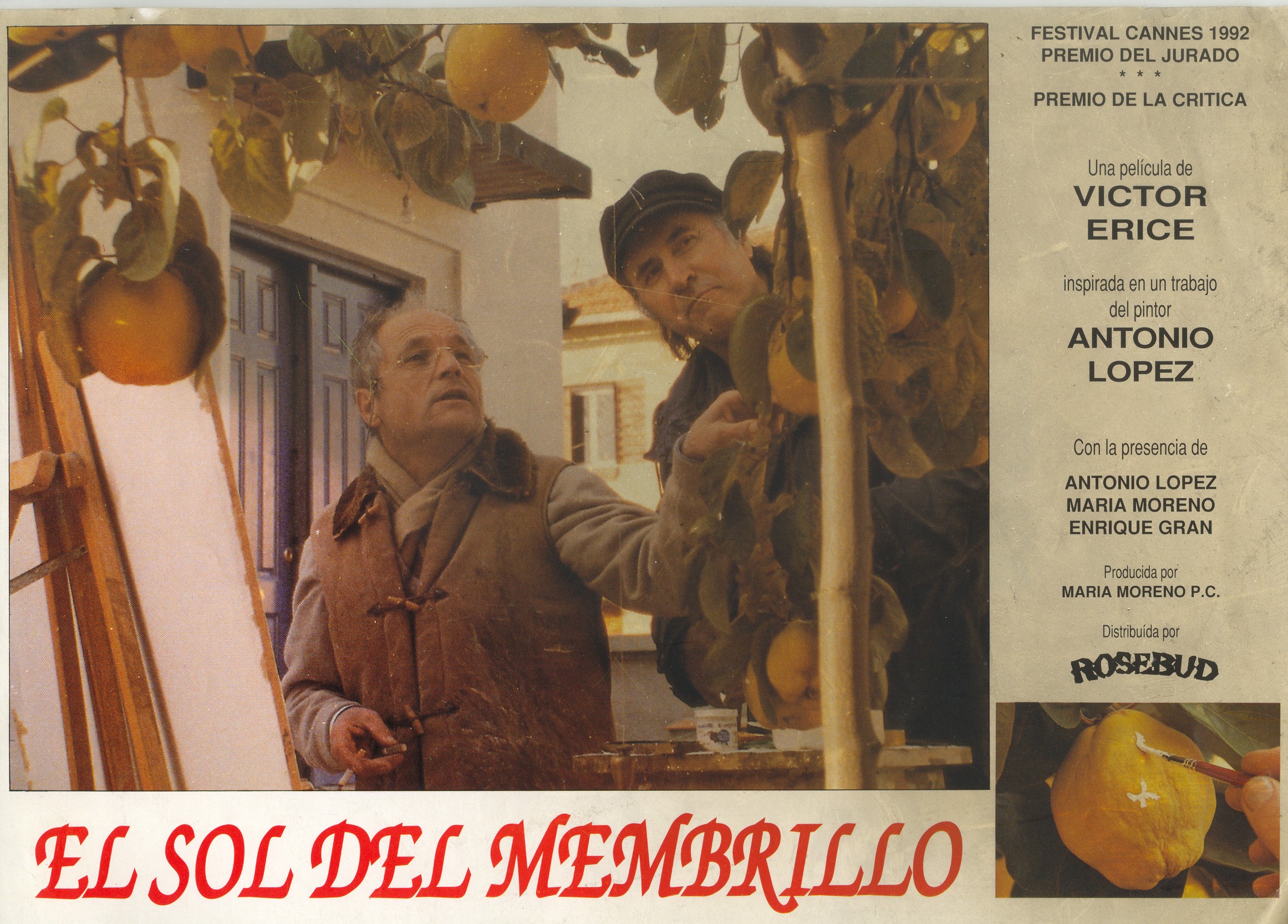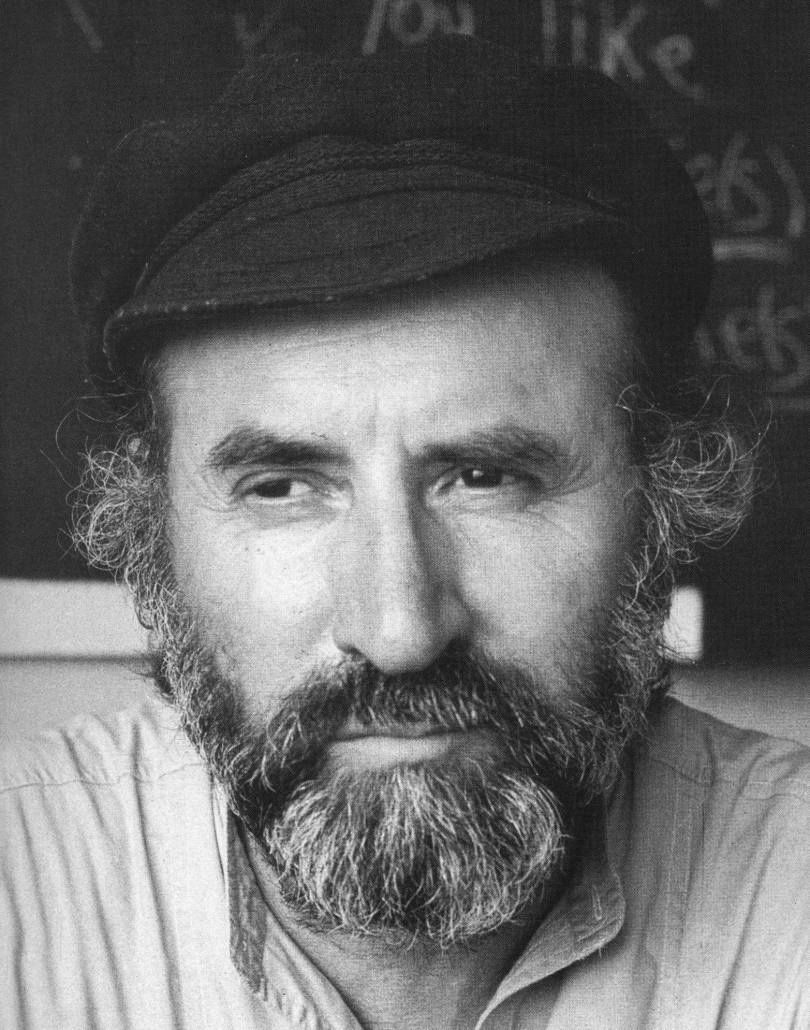Biography / Artistic career
Short Biography
Enrique Gran’s talent showed from a very young age. This talent would make him one of the best painters of his generation. He had a personal vision of the abstract trend in Art and an outstanding and personal performance within the Spanish painting world. His performance has been backed by the important personalities amongst the critics.
Gran was part of a famous generation of painters, such as Antonio López,Lucio Muñoz, Maria Moreno, Isabel Quintanilla…, former students of “Academia San Fernando”, Madrid, in the period at beginning of the 50’s.
Important artists and literary personalities have written about Gran, Francisco Nieva, member of the “Real Academia de la Lengua Española”, the writer Juan José Millás, the Premio Cervantes José Hierro, the painter Pancho Cossío, the art critic Francisco Calvo Serraller,…
His international career started in 1961, after taking part in the “XXX Bienal Internacional de Arte” in Venezia.
His paintings are exhibited in museums and private collections all over the world like the “Museo Nacional Centro de Arte Reina Sofía”, Madrid, the “Storm king Art Center”, New York and the Unesco Museum in Nairobi.
In 1992, Gran and the actor Antonio López had a main role in the film “El Sol del membrillo” by director Victor Erice. The film was rewarded at the Cannes Festival and was considered the best film of the 90’s as judged by the “Cinemateca de Toronto” after enquirying of the main film industry representatives from around the world.
Santamatilde, image E. Gran with their working tools
Art Career Biography
Enrique Gran Villagraz, born 2nd November 1928 in Santander and dying 8th January 1999 in Madrid.
1928
Gran was born in Santander and had a play ful childhood. He started designing small artistic figures in small stones, imitating what he saw in nature.
1936
It was during the Spanish Civil War that he discovered the concepts of lines, figures and movement by looking at the comics of the time, “El Aventurero”, “Mickey”, “Flechas and Pelayo”, “El guerrero del antifaz”, “Roberto Alcánzar y Pedrín”, “Flash Gordon”,…
1940
Gran started the formal study of distance drawing.
1942-1944
Gran started studyng Maths, Chemistry and Physics in the “Apprentices School” in Santander. These studies would have a great influence on his artistic life as he later showed passion for science in his paintings, mixing colours, shapes, light and the universe and energy in his paintings.
1945
He combined drawing with his work as an electrician in Nueva Montaña, Santander.
1949
Gran was sent to Madrid for his Military Service where he regularly visited the “Museo del Prado”, it was there that he came across the greatest painters of all times: Brueghel, El Bosco, Velazquez and Goya, these were his biggest inspirations.
1951
He was accepted into “Academia San Fernando”, Madrid, sponsored by the “Diputación Provincial de Santander”, a political authority. His years in the academy were the most influencial as he developed lifelong friendships with other artists such as Amalia Avia, Antonio López, Francisco López, Julio L. Hernández, María Moreno, Lucio Muñoz, Esperanza Parada, Isabel Quintanilla and Joaquín Ramo.
1952
He was sponsored again by the “Diputación Provincial de Santander”, this time to travel to France, where he again met Joaquín Ramo, Carmelo Bernaola and Eusebio Sempere.
During this period in Paris, Gran showed an interest in post impressionism: Cezanne, Van Gogh and Picasso.
1956
Gran briefly explored the New Cubism before he started working on Abstract Expresionism.
1959
This was his first solo exhibition in “Sala Minerva”, in the “Museo de Arte”, Madrid, the themes were figures and shapes.
His art pieces were acclaimed by the famous painter Pancho Cossío, who designed the front cover of the catalogue.
1960-1961
Gran received a scholarship from the “Juan March Group”. The very same year he was selected to take part on the Spanish Committee for the “XXX Bienal Internacional de Arte” in Venezia and he presented his first exhibition in his home town, Santander, in “Galería Sur”.
His international career took off this year the main exhibitions taking place in Belgium, ( Contemporary Spanish Art. Palais de Beaux Arts), Germany, ( Galería, 59, Wolfram Eschenbach), (Beethoven Hall, Bonn), ( International Malerei, Berlin), France ( II Bienal de Paris,Musée d’Art Moderne) and Finland ( Cuatrienal de Finlandia, Helsinki), where his paintings were requested.
1962
Gran was again selected to represent Spain in the “XXXI Bienal Internacional de Arte”, in Venezia, and in the Spanish Art Exhibitions which took place in Berlin and Bonn.
Gran also presented a very personal exhibition in the “Ateneo”, Madrid. José Hierro dedicated a monograph published in “Cuadernos de Arte” to him.
1963
Gran again presented a personal exhibition in “Galería Sur”, Santander. He also took part in “Arte de América y España” and in the “Man 63” exhibitions in Barcelona.
1965
Gran was selected to represent Spain in the “VI Bienal Internacional”, Alejandria, Egypt. He also exhibited his work together with Fernando Saez and Salvador Victoria in “Galería Juana Mordo”, Madrid.
1966
He again presented a personal exhibition in “Galería Juana Mordó”, Madrid, called “Rompimientos” with works based on collages. He was again acclaimed internationally and was selected as the Spanish Representative at the “XXXII Bienal Internacional de Arte” in Venezia.
1967
Gran’s paintings took on a definite mature style as his work in “Galería Grises”, Bilbao, “Sala Alerta”, Santander and “Sala Mainel”, Burgos showed.
His theme was an irreal ambiance of great strength, created by the artist.
1968
From this time on his work was requested by important private collections. His work was also exhibited at numerous international Art Centres in Europe and in America: “Kunstverein”, Berlin, Germany, “Spansk Kunst I Dag”, Louisiana Museum, Copenhague, Denmark, “Boymanss van Beuninguen”, Rotterdam Museum, Holland…
1970
He had a solo exhibition in “Galería Juna Mordó”, Madrid. His was awarded the “Juan March” scholarship to continue his career development abroad.
1972
He had a solo exhibition in “Galería Mordó”, Madrid. His work catalogue was presented by Santiago Amón.
1974
He had a solo exhibition in “Galería Lúzaro”, Bilbao. He was awarded the prize “Iberia, Líneas Aéreas de España”.
1975-1978
Again solo exhibition in “Galería Mordo”, Madrid. His work catalogue was presented by Joaquín de la Puente. The Spanish Ministry of Education and Science included a monograph of Gran in a “Contemporary Spanish Artists” publication written by Leopoldo Rodriguez Alcalde and an introduction written by Santiago Amón.
1981
Again solo exhibitions in two Art Centres in Cantabria, Spain, the “Art Museum”, Santander and “Fundación Santillana”, Santillana del Mar, Cantabria being the front cover of the “Fundación Santillana exhibition catalogue written by Antonio Bonet Correa.
That year he also designed the “XXX Festival Internacional de Santander”’s official poster
1982
He took part in the “French-Engravers, Spanish Engravers” exhibition in the Spanish Museum of Contemporary Art.
He was also awarded the biggest prize of the “Castilla La Mancha” Cultural Group.
1983
He formed part of the exhibition “Human Rights Artists” in Madrid and in the exhibition “Spanish Abstract Art” at the “Juan March Group” also in Madrid.
1984
His support and signature was requested to transform the use of the former “San Carlos Hospital” into today’s “Reina Sofía Art Centre”, illustrious National Museum.
1985-1990
Gran took part in the homage exhibition to Juana Mordó in the “Círculo de Bellas Artes”. He also participated in the publication of “Graphic Artists File” called “Silent-Moments” by the Art Museum in Santander, contributing this way to the International Festival of Santander.
He also exhibited as a solo artist at “Sala María Blanchard”, founded by the “Conserjería de Cultura”, part of the Cantabrian Government and at the “Caixa-Galicia Centre” in La Coruña, Spain.
1991
Again solo exhibition in San Roman de Escalante, Cantabria and together with other artists in Torre de Lozoya, Segovia, called “From 1919 to 1991, from Paular to Segovia”. He was also selected to take part in “From the Surrealism to the Informalism, the 50’s Art in Madrid” which took place in “Salas de la Comunidad Autónoma” in Madrid.
1992
Again solo exhibition in the Art Museum of Santander. He takes a main role in a film directed by Victor Erice, “El sol del membrillo”, together with Antonio López, this film gets awarded two prizes at the Cannes Festival 1992 and it was considered the best film of the 90’s as judged by the “Cinemateca de Toronto” after enquirying of the main film industry representatives from around the world.
Gran also takes part in another exhibition “Otra realidad. Compañeros en Madrid”, which showed the work from all the artists friends who represented a whole generation of contemporary art: María Moreno, Isabel Quintanilla, Francisco López, Esperanza Parada, Julio L. Hernández, Amalia Avia, Lucio Muñoz, Joaquín Ramo and Antonio López. This exhibition took place in Madrid, Santander and Zaragoza.
1998
One of his last exhibitions takes place in “Eulalio Ferrer Group” in Mexico, the theme was the character “Don Quijote de la Mancha”. The “Centro Cultural Conde Duque de Madrid” sponsored by the “Botin Group” dedicated Gran a lifetime exhibition also this year.
1999
Gran died at the age of 70. The cause, a fire in his Madrid studio.

